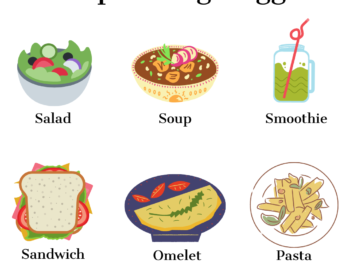Below is my latest blog post for Huffington Post.
You can also read it HERE.
Fast food is known to be high in fat, sugar and salt, and frequent consumption of fast-food may contribute to a diet of poor quality, which may raise a user’s risk for overweight and chronic diseases that are diet-related (e.g., heart disease and hypertension). Indeed, when Morgan Spurlock embarked on a 30-day experiment to eat all his meals at McDonald’s, he gained 25 pounds, and his physicians were concerned with his health.
French fries and burgers are loaded with fat and salt, and oversized sodas and other sugary drinks are full of sugar. And most traditional fast-food items are loaded with calories.
With so much attention on the relationship between obesity and eating out, has the fast-food industry improved their offerings over the years? It seems that the choices today are not that much healthier, a new study says. According to the researchers, the nutritional quality of fast-food items has improved only modestly over 14 years.
The research, published in the American Journal of Preventive Medicine and funded by the Robert Wood Johnson Foundation, analyzed menus from eight top fast-food restaurant chains: McDonald’s, Burger King, Wendy’s, Taco Bell, Kentucky Fried Chicken (KFC), Arby’s, Jack in the Box and Dairy Queen. Menus were compared from 1997/1998 with 2009/2010. According to HealthDay:
Menu scores did not change for fruit, whole fruit, total vegetables, dark green and orange vegetables, legumes, total grains, whole grains, and oils. The good news was that scores improved for meat, saturated fat, and calories from solid fats and added sugars. On the other hand, scores for milk/dairy and sodium got worse. The overall nutritional quality score of 48 associated with these eight restaurants fell below that of the average American diet.
What I have found with my own research on fast-food portion sizes, published in the November issue of the American Journal of Preventive Medicine, is that while fast food establishments are offering some healthier items, they continue to add new larger-sized items. And large sizes just about always means more calories! As I wrote for HuffPost,
Portion sizes have continued to increase through the first decade of the 21st century. Top fast-food and restaurant chains continue to introduce new large-size portions. Food companies are introducing bigger burgers, burritos, pizzas, and sandwiches. Some of these single-serving items (meaning, they are marketed for one person) contain more than 1,000 calories. For example, Wendy’s Baconator Triple burger contains approximately 1,300 calories and Burger King Triple Whopper contains 1,140 calories.
In this new study, while modest improvements were observed in the fast-food offerings over the years, the authors stated that there is much more that can be done, especially since fast food is so ubiquitous in the diet. The authors noted that more than 25 percent of American adults eat fast food at least two times a week.
While we can hope that the food industry offer up healthier options soon, here is what you can do in the meantime if you still want to indulge in fast food.
- Choose a “single” burger over a double or triple.
- Choose a chicken dish over a meat dish. When faced with a choice between a burger or a grilled chicken salad or sandwich, I would suggest opting for the chicken.
- Skip the French fries. Or, if you must, opt for the “small.”
- Choose water instead of soda. You will save lots of calories and unneeded sugar. Water trumps diet soda as well!
- Add a salad to your meal.
- For dessert, choose whole fruit over pie. Purchase an apple instead of apple pie, for example.
- Eat slowly. Chew your food well. And, enjoy the company you are with.
- And, finally, eat fast food sparingly.



